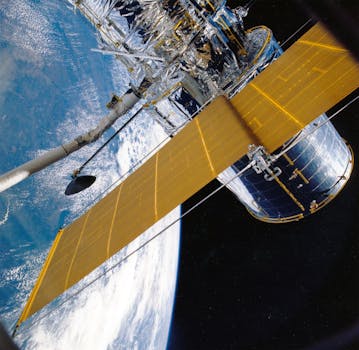Unlocking the Power of GEO Satellites: Revolutionizing Global Communications

GEO Satellites: The Backbone of Global Communications
GEO satellites, or Geostationary Earth Orbit satellites, are a type of satellite that orbits the Earth at an altitude of approximately 36,000 kilometers, remaining stationary relative to a fixed point on the Earth’s surface. This unique characteristic allows GEO satellites to provide continuous coverage of a specific region, making them ideal for a wide range of applications, including telecommunications, navigation, and meteorology.
The use of GEO satellites has revolutionized the way we communicate globally, enabling the transmission of data, voice, and video signals over long distances. With the advent of advanced satellite technology, GEO satellites can now provide high-speed internet connectivity, even in remote and underserved areas. This has opened up new opportunities for economic development, education, and healthcare, bridging the digital divide and connecting people around the world.
Applications of GEO Satellites
GEO satellites have a wide range of applications, including telecommunications, navigation, meteorology, and Earth observation. In the field of telecommunications, GEO satellites are used to provide mobile and fixed broadband services, as well as broadcast services such as television and radio. They are also used for navigation, providing location information and timing signals for GPS and other satellite navigation systems.
In addition to these applications, GEO satellites are also used for meteorological purposes, such as weather forecasting and climate monitoring. They can provide high-resolution images of the Earth’s surface, allowing scientists to track weather patterns, monitor ocean currents, and study the effects of climate change. Furthermore, GEO satellites can be used for Earth observation, providing valuable data on the environment, natural resources, and natural disasters.
Advancements in GEO Satellite Technology
In recent years, there have been significant advancements in GEO satellite technology, driven by innovations in materials, propulsion systems, and electronic components. One of the most significant developments is the use of high-throughput satellites (HTS), which can provide much higher data rates than traditional GEO satellites. HTS satellites use multiple spot beams to cover a specific region, allowing for more efficient use of bandwidth and higher capacity.
Another area of innovation is the use of electric propulsion systems, which provide greater fuel efficiency and longer mission durations. Electric propulsion systems use electrical energy to accelerate ions or xenon gas, generating thrust and allowing the satellite to maintain its position and altitude. This technology has enabled the development of more powerful and efficient satellites, with longer lifetimes and greater capabilities.
Challenges and Future Developments
Despite the many advantages of GEO satellites, there are also challenges associated with their use. One of the main challenges is the risk of congestion in the geostationary orbit, as the number of satellites increases and the demand for bandwidth grows. To address this challenge, satellite operators and manufacturers are developing new technologies and strategies, such as the use of smaller satellites and more efficient propulsion systems.
In conclusion, GEO satellites are a vital component of modern telecommunications, providing essential services such as high-speed internet, navigation, and meteorological data. As technology continues to evolve, we can expect to see even more innovative applications of GEO satellites, from the Internet of Things (IoT) to 5G networks and beyond. With their unique capabilities and advantages, GEO satellites will remain a cornerstone of global communications, connecting people and devices around the world.




